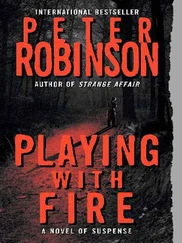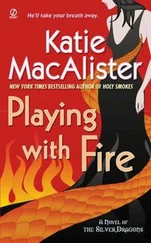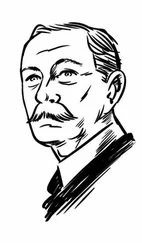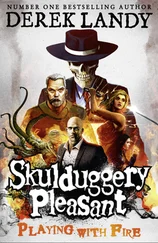The Chef’s Table became a trademark of our operation, and is a feature in nearly all of our restaurants. It makes great commercial sense. For years, guests never dreamed of coming near a commercial kitchen. Suddenly, everyone is interested – not just in food, but how it is put together, and its production has become theatre. The chefs love it when they see guests interested in what they do. Very often, they will invite the guests to the stove to help stir a pot or dice a shallot. The table is a great revenue source, and, occasionally, tips are exceptional – as once witnessed when the three ladies of a particularly lively Chef’s Table stood up and bared their tits in gratitude. The brigade cheered and the evening became buried in folklore. Unfortunately, it was my day off.
The Chef’s Table is also the guarantee of total hygiene. Everyone working in the kitchen knows that clean is not enough. It has to look as it did on the day it opened. Shine, polish, burnish, sparkle – the whole nine yards. No fucking excuses.
The opening of Gordon Ramsay at Claridge’s was delayed by three months. It would have been inconceivable originally, but the combined noise of drilling and the preciousness expressed by hotel guests made the original opening date of July an impossibility. This had an unexpected benefit.
The taking over of Claridge’s restaurant had brought to my attention the concept of TUPE, the Transfer of an Undertaking Protection of Employment. In essence, this meant that anyone employed by a going concern, company or business was automatically transferred as an employee to the new owners or employers, irrespective of how the transfer of the business took place. Sounds reasonable in the first instance – until you realize that you may be taking on employment liabilities relating to people with thirty years’ service. In the case of Claridge’s, there were something like eighty such employees, and this was a real concern. Not only had they been around this establishment for years, but during that time, they had taken on personas that would in no way suit the operation that we had in mind.
What I didn’t realize was that they were as nervous about coming on board as I was about their existence. The easy life of serving twenty or so guests at lunch or dinner was about to come to an end. We were already working on 120 guests for lunch and 150 in the evenings, and word was out on what we expected from our staff. With this in mind, forty of the transferees had already tendered their notices and were on their way to pastures new or, perhaps, just out to pasture. With the announcement of a September opening, the others threw in the towel, every single one of them, and we were free to start afresh. Thank you, God.
For John Ceriale, there were always three fundamental components in opening a successful restaurant: the location, the chef and the design. Well, we certainly had the location, and the kitchen was never going to be a problem. The design – or, rather, the designer – was the ace up John Ceriale’s sleeve. Tucked away in an old converted cold store in New York’s Tribeca was Thierry Despont, who was given the commission to not only bring Claridge’s foyer into the new age of old elegance, but was also charged with the design of my new restaurant.
Claridge’s restaurant had been on the ground floor on the west side of the hotel for 100 years and had probably never turned a profit. It was a mausoleum – a huge, high-ceilinged cathedral where tail-coated waiters had pranced between the tables, dispensing arrogance and superciliousness while serving plates of grown-up school dinners. The task facing any designer would be daunting. It was easy to throw out the aspidistras and Victorian bric-à-brac, but all that was left was an echoing cave large enough to hangar a jumbo jet.
One winter’s day, we found ourselves in Tribeca about to meet the man who was going to change all that. His cold store had been transformed into an amazing five floors of sample rooms, drawing desks and Apple Macs. He was a tall, nasal Frenchman with a confidence and arrogance that I liked. Moreover, he was someone who listened to us when we started on the long list of considerations that he would have to take on board. He presented a three-dimensional concept of what he had in mind. Fucking breathtaking, as we sat and watched. This was the guy who spruced up the Statue of Liberty on its 200th birthday, and now he was about to design my new restaurant.
You may remember that, earlier on, I thought that the Claridge’s challenge was about to launch us into a different league and, in doing so, it would introduce me to a whole new world of international travel and an involvement with people who think in global terms. You know that I am already beginning to understand that this will become the template for the years to come, and I am shitting myself with excitement.
The deal to take this over was as simple as ABC. The owners were to pay all the big bills. The megabucks that were needed to make it happen came from them. All I had to do was find the money to supply the china, the silver, glassware, the ‘tabletops’, the staff uniforms, the kitchen equipment and a little working capital. I say ‘a little working capital’ because, of course, when the restaurant opened, money started to come in on the first night, even before the last table was crumbed down. That meant we had thirty days before we had to pay the staff and sixty days of income before having to pay a supplier. Chris, who had come from a thirty-year career in printing, reminded me that he had to wait between sixty and 120 days for his money in his previous life. The only thing that spoilt this positive cash flow arrangement was having to pay three months’ rent in advance, provide a minimum of £ 100,000 in authorized and paid-up capital, and arrange a letter of credit from the bank to cover a quarter’s rent in case of default. In addition, we paid 11 per cent of our net takings to Blackstone by way of rent. As I said, easy as ABC.
The negotiations over the drafting of the lease and the operating agreement went on forever. Chris spent hours in meetings with marked-up drafts going backwards and forwards. What we didn’t realize then was that the format was to become a way of life for the two parties, and was to be used for a further twelve restaurants at the time of writing this. And that’s simply because we got it right at the beginning.
The restaurant build seemed to take forever. It did, however, give us time to recruit the right staff, train them and make sure that everything was in place, ready for the big opening. It was time to acquaint ourselves with systems and procedures, which, in the coming two years, grew into Gordon Ramsay Holdings and set the stage for three new openings a year for the following five years.
The opening night was a glitzy affair – a real ball for all. The restaurant was cleared of tables and chairs so that over 500 guests could enter through the magnificent foyer of Claridge’s to see the fabulous transformation of the mausoleum. Outside along the kerb were half a dozen nineteenth- century hackney carriages, each with a pair of horses with their noses in their feedbags – right back to when Claridge’s first threw its doors open to the public. The press boys were everywhere, and even then, on that very first night, before the till had even rung up once, I knew that we had just broken through rock and found a vein of gold. John Ceriale, a shy man when it comes to the public, was there to see the launch of his baby with a grin the size of the Brooklyn Bridge.
That is not to say that Gordon Ramsay at Claridge’s proceeded without a hitch. In the first year, we bottom-lined at £ 600,000. The second year was much the same. But in the third, we closed the year off at £ 1.65 million and then went on to reach close to £ 2 million in each successive year, and that must tell a tale.
Читать дальше












